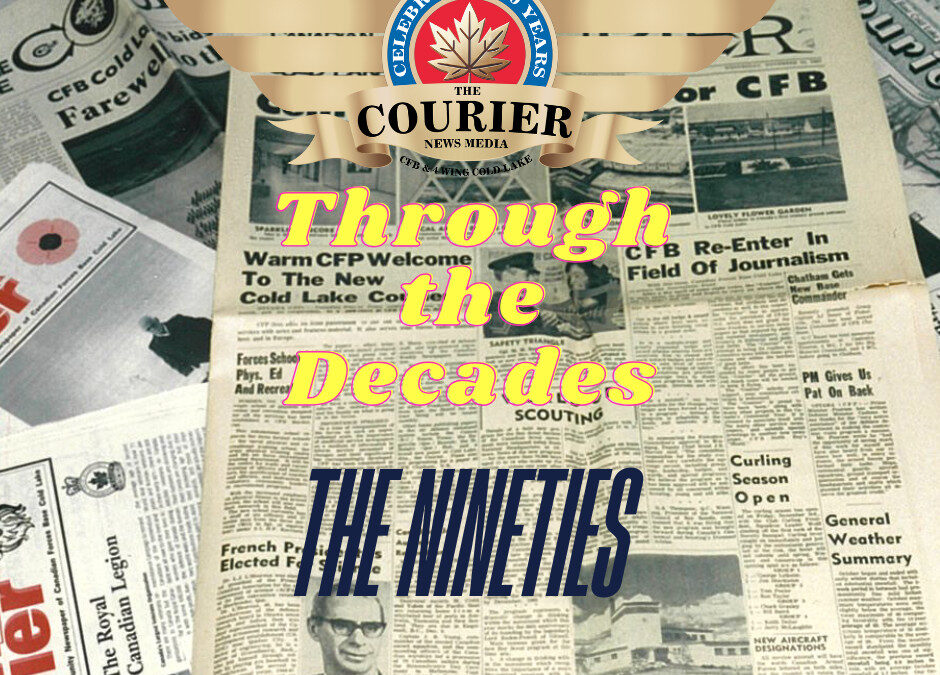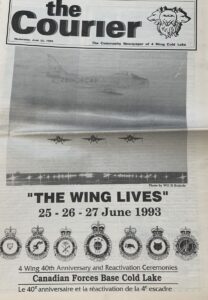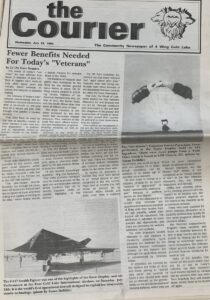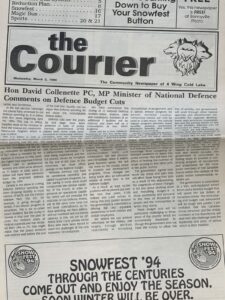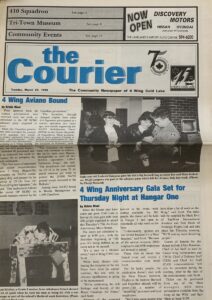Our trip through time brings us to the 1990s—an era of global change, shifting alliances, and cultural revolutions that still echo today. For CFB Cold Lake and the Royal Canadian Air Force, it was a decade marked by overseas deployments, restructuring at home, and the re-establishment of 4 Wing as a key hub for Canadian air power.
Life in the 1990s
The 1990s blended optimism and uncertainty. The Cold War ended with the collapse of the Soviet Union, but new conflicts soon emerged in the Persian Gulf and the Balkans. Canada, as part of NATO, was deeply engaged in peacekeeping and coalition operations abroad.
At home, the decade was filled with grunge music, plaid shirts, and the rise of hip hop as a global force. Films like Jurassic Park, Titanic, and The Matrix set box office records, while shows like Friends and The X-Files defined television. Technology leapt forward—cell phones grew smaller, the internet entered homes, and email replaced much of the old-fashioned letter writing. Video game icons like Mario and Sonic shaped a new generation of players, while CD collections replaced cassette tapes in living rooms everywhere.
The Canadian Armed Forces in the 1990s
The Gulf War was Canada’s first major combat deployment since Korea. In 1990, units from CFB Cold Lake deployed to support Operation Friction, with CF-18s operating in theatre alongside coalition forces. Canadian pilots flew combat air patrols, escort missions, and provided a visible symbol of Canada’s commitment to international security.
Change also arrived at home. With the closure of CFB Baden-Soellingen in Germany in 1993, 4 Wing was re-established at CFB Cold Lake, cementing its place as the home of the CF-18 Hornet. That same year, the base hosted the first modern Cold Lake Air Show, which quickly grew to become one of the Lakeland region’s biggest summer attractions.
The mid-1990s brought the 1994 Defence White Paper, which proposed significant reductions to the Canadian Armed Forces. Post-Cold War optimism and budget pressures led to base closures, force reductions, and questions about the future role of the military. Yet despite the cuts, Cold Lake remained a central pillar of Canada’s air defence and training.
By the decade’s end, 4 Wing was once again deploying abroad. In 1999, CF-18s and personnel left for Operation Echo, Canada’s air contribution to the NATO campaign in the Kosovo War. Based out of Aviano, Italy, Canadian pilots flew combat missions over the Balkans, marking another significant milestone in the RCAF’s modern history.
Headlines from The Courier News in the 1990s
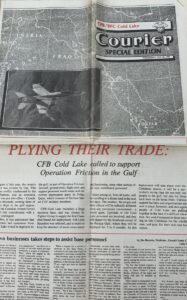 November 28, 1990 – Units from CFB Cold Lake prepare to deploy as part of Operation Friction in the Gulf War. Canadian CF-18s will fly combat missions overseas for the first time in decades.
November 28, 1990 – Units from CFB Cold Lake prepare to deploy as part of Operation Friction in the Gulf War. Canadian CF-18s will fly combat missions overseas for the first time in decades.
June 23, 1993 – 4 Wing is officially re-established at CFB Cold Lake following the closure of CFB Baden-Soellingen in Germany. The move strengthens Cold Lake’s role in Canada’s air operations.
July 28, 1993 – Crowds gather for the first modern Cold Lake Air Show, launching a tradition that has since grown into one of the premier aviation events in the country.
March 2, 1994 – Reaction to the federal government’s 1994 Defence White Paper, which calls for reductions to the Canadian Armed Forces in a new, post-Cold War environment.
March 23, 1999 – 4 Wing members depart for Aviano, Italy, to take part in NATO’s Operation Echo during the Kosovo War. Canadian Hornets are once again called to combat duty on the international stage.
Stay tuned as we continue our journey through the decades, uncovering the stories and people that have made The Courier News a cherished part of the military community for 70 years.






